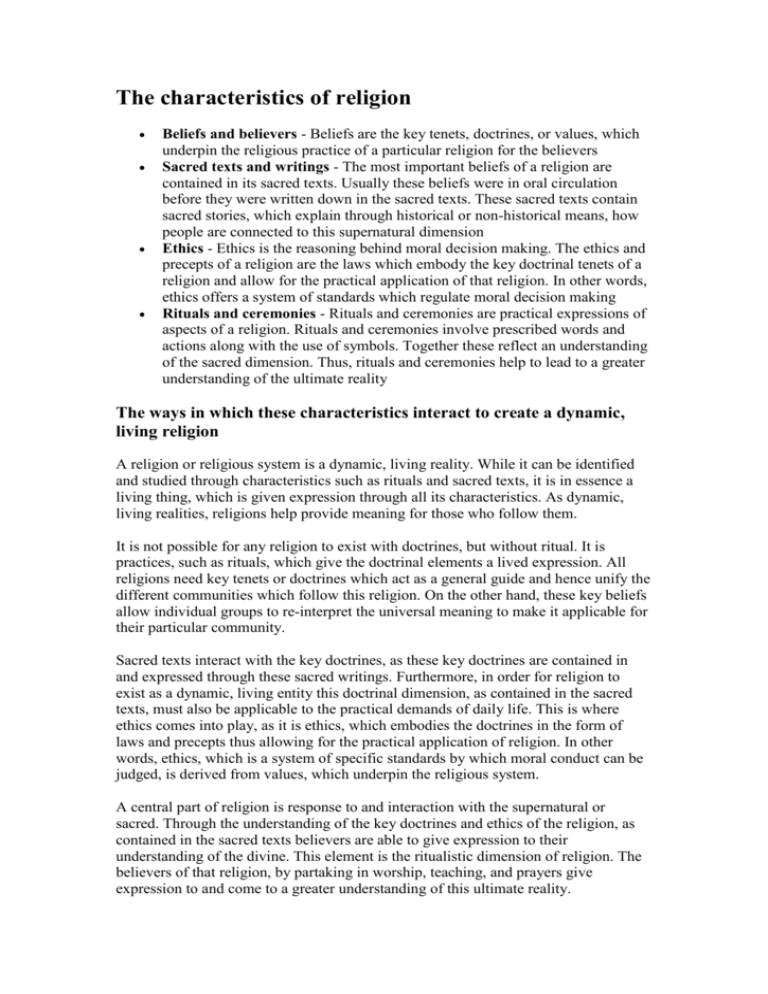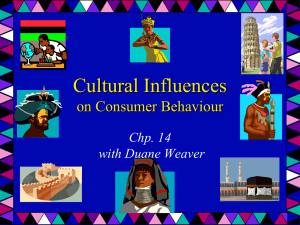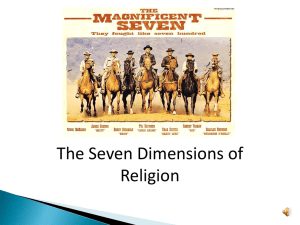The characteristics of religion
advertisement

The characteristics of religion Beliefs and believers - Beliefs are the key tenets, doctrines, or values, which underpin the religious practice of a particular religion for the believers Sacred texts and writings - The most important beliefs of a religion are contained in its sacred texts. Usually these beliefs were in oral circulation before they were written down in the sacred texts. These sacred texts contain sacred stories, which explain through historical or non-historical means, how people are connected to this supernatural dimension Ethics - Ethics is the reasoning behind moral decision making. The ethics and precepts of a religion are the laws which embody the key doctrinal tenets of a religion and allow for the practical application of that religion. In other words, ethics offers a system of standards which regulate moral decision making Rituals and ceremonies - Rituals and ceremonies are practical expressions of aspects of a religion. Rituals and ceremonies involve prescribed words and actions along with the use of symbols. Together these reflect an understanding of the sacred dimension. Thus, rituals and ceremonies help to lead to a greater understanding of the ultimate reality The ways in which these characteristics interact to create a dynamic, living religion A religion or religious system is a dynamic, living reality. While it can be identified and studied through characteristics such as rituals and sacred texts, it is in essence a living thing, which is given expression through all its characteristics. As dynamic, living realities, religions help provide meaning for those who follow them. It is not possible for any religion to exist with doctrines, but without ritual. It is practices, such as rituals, which give the doctrinal elements a lived expression. All religions need key tenets or doctrines which act as a general guide and hence unify the different communities which follow this religion. On the other hand, these key beliefs allow individual groups to re-interpret the universal meaning to make it applicable for their particular community. Sacred texts interact with the key doctrines, as these key doctrines are contained in and expressed through these sacred writings. Furthermore, in order for religion to exist as a dynamic, living entity this doctrinal dimension, as contained in the sacred texts, must also be applicable to the practical demands of daily life. This is where ethics comes into play, as it is ethics, which embodies the doctrines in the form of laws and precepts thus allowing for the practical application of religion. In other words, ethics, which is a system of specific standards by which moral conduct can be judged, is derived from values, which underpin the religious system. A central part of religion is response to and interaction with the supernatural or sacred. Through the understanding of the key doctrines and ethics of the religion, as contained in the sacred texts believers are able to give expression to their understanding of the divine. This element is the ritualistic dimension of religion. The believers of that religion, by partaking in worship, teaching, and prayers give expression to and come to a greater understanding of this ultimate reality.







